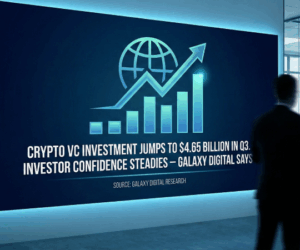After leading growth for multiple product-led startups, I’ve learned that selling as a non-technical person in a product-driven world demands more than charm or persistence; it requires architecture.
When engineering takes center stage, commercial leadership becomes the invisible glue that translates innovation into revenue. Building revenue systems without a clear blueprint is like launching without insurance. The idea may fly, but it won’t stay airborne for long.
The Rise (and Risk) of Product-Led Growth
The dot-com boom popularized the approach of presenting software as a service (SaaS), and with it, the rise of Product-Led Growth (PLG). This shift moved the center of gravity in startups toward engineering and product teams.
For years, the prevailing wisdom was simple: if the product is excellent, revenue will follow. That may have been true when SaaS companies were few and competition was thin, but in today’s crowded landscape, the belief that great products sell themselves has created a dangerous blind spot, a devaluation of the sales function, especially for non-technical leaders. Building a product without an intentional revenue blueprint is innovation without insurance.

For those of us leading sales in PLG environments, our job isn’t to just close deals; it’s to design the bridge between technical brilliance and commercial reality. Here’s how to win as a non-technical operator in a product-led world.
The PLG Paradox: Redefining Value
1. The Language Barrier : Beyond Features
Engineers speak in APIs, microservices, and onboarding flows. Finance leaders speak in ROI, net retention, and payback periods. The non-technical leader must be the Translator-in-Chief.
If you can’t translate engineering velocity into financial value, you’ll be seen as a cost center rather than a revenue architect.
2. The Cultural Gap : From Art to System
Many technical founders still view sales as a hustle or an art. Our role is to institutionalize it , to bring the same discipline to revenue as engineers bring to code. Sales should operate with sprints, dashboards, and retrospectives too.
By implementing a structured RevOps system, I help turn chaos into predictability: defining every stage, automating reporting, and linking every deal to quantifiable business impact. That is the blueprint that scales sales beyond founder-led deals.
The Non-Technical Playbook: Three Pillars for Revenue Architecture
Pillar 1: Architect the GTM Strategy with Technical Empathy
Understanding the technical architecture of your product, not to fix it, but to position it is critical. Technical empathy lets you identify the “narrow wedge” your product can dominate first.
Action Step:
Establish a structured product-sales feedback loop. When your engineering team builds a new API or integration, your GTM motion should immediately pivot toward customers that rely on that ecosystem. Aligning product velocity with revenue velocity is how non-technical leaders stay indispensable.
Pillar 2: Build the Predictable Revenue Engine (RevOps)
Where engineers deliver reliable code, revenue leaders must deliver reliable forecasts. That means moving from spreadsheets to systems.
Action Step:
Design your CRM as the operating system of your revenue team. Every stage should have clear exit criteria, every metric a defined owner, and every dashboard a direct tie to financial outcomes.
When your forecasts become as predictable as product release cycles, investors start to trust your growth engine and that trust is capital.
Pillar 3: Lead with the Finance-First Business Case
The CFO is immune to feature hype. Speak their language; risk, cost, and return.
Action Step:
Anchor every proposal around three numbers:
- Cost of Inaction: Quantify the problem’s financial pain (e.g., regulatory fines, lost hours).
- Revenue Uplift: Translate your solution into measurable growth.
- Net Dollar Retention (NDR): Design your pricing and contracts so your revenue grows as your customer grows.
This transforms every sale into a long-term business case, not just a transaction.


From Seller to Strategic Partner
The non-technical leader’s function is the last mile of innovation. We ensure the brilliance of engineering doesn’t stay an expensive hobby but becomes a sustainable, category-defining business.
Our blueprint for impact isn’t written in Python, it’s in GTM design, revenue operations, and financial translation. By embracing the role of the Revenue Architect, we move beyond selling to shaping the commercial destiny of our products.
Where is your revenue engine breaking down; in the product, or in the story you tell about it?
About the Author
Orewa (Jenny) Olusanya is Head of Growth (EMEA) at AiPrise, a YC-backed compliance technology company helping global fintechs orchestrate KYC, KYB, and AML verification. She is also the Co-founder of Tech Sales Starter, a digital education platform that has trained 100+ individuals across Africa for careers in global tech sales.
Connect with her on LinkedIn.
See also: How Nigeria’s new digital economy bill could make government finally work like your banking app








